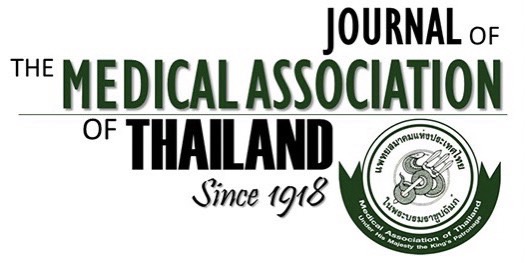An Epidemiologic Study of the Thai Stroke Rehabilitation Registry (TSRR): A Multi-Center Study
Vilai Kuptniratsaikul MD*, Apichana Kovindha MD**, Pornpimon Massakulpan MD***, Krisna Piravej MD****, Sumalee Suethanapornkul MD*****, Piyapat Dajpratham MD*, Nuttaset Manimmanakorn MD******, Wutichai Permsirivanich MD*******, Yingsumal Archongka MD********, Patcharawimol Srisa-an Kuptniratsaikul MD*********
Affiliation : * Rehabilitation Medicine Department, Faculty of Medicine Siriraj Hospital, Mahidol University, Bangkok ** Rehabilitation Medicine Department, Faculty of Medicine, Chiang Mai University, Chiang Mai *** Physical Medicine and Rehabilitation Department, Prasat Neurological Institute, Ministry of Public Health, Bangkok **** Rehabilitation Medicine Department, Faculty of Medicine, Chulalongkorn University, Bangkok ***** Rehabilitation Medicine Department, Phramongkutklao Hospital and College of Medicine, Bangkok ******Rehabilitation Medicine Department Faculty of Medicine, Khon Kaen University, Khon Kaen ******* Department of Orthopaedic Surgery and Rehabilitation Medicine, Prince of Songkla University, Songkhla ******** Sirindhorn National Medical Rehabilitation Center, Ministry of Public Health, Bangkok ********* Rehabilitation Medicine Department, Faculty of Medicine Ramathibodi Hospital, Mahidol University, Bangkok
Objective : To perform the registry of stroke patients receiving the in-patient comprehensive rehabilitation
program at main tertiary hospitals from March to December 2006.
Material and Method: Demographic data including medical history and pathology of stroke were recorded.
All subjects received a comprehensive rehabilitation program until they reached their rehabilitation goals or
discharge criteria.
Results : Three hundred twenty seven patients met the inclusion criteria. The mean age was 62 +/- 12 years,
and 59% were males. Most of the patients were married (73.1%), lived in an urban area (62.1%), and had an
education level of primary school or lower (58.7%). The median duration from onset to admission for rehabili-
tation was 24 days. The major medical history was hypertension (74.9%), followed by dyslipidemia (54.4%),
diabetes mellitus (26.6%), and ischemic heart disease (18.0%). Fifty-one (15.6%) patients had a history of
previous stroke. Cerebral infarction was found in 71.9%, including thrombosis (45.3%), lacuna infarction
(15.3%), and emboli (8.0%) and 28.1% had hemorrhagic stroke. On admission, more than half (51.8%) had
cognitive impairment and one-third (31.5%) had bowel-bladder problems. Almost all of the patients (99.4%)
had family support. Either their spouse or siblings had undertaken the main caregiver role (46.5% and 40.4%
respectively). However, more than 80% of the patients were discharged to their own homes or immediate
family’s house.
Conclusion : This was the first multi-center registry of inpatient stroke rehabilitation in Thailand. It presented
the epidemiologic aspects in order to become national data of stroke patients receiving medical rehabilita-
tion services.
Keywords : Stroke, Epidemiology, Registry, Rehabilitation, Multi-center study



